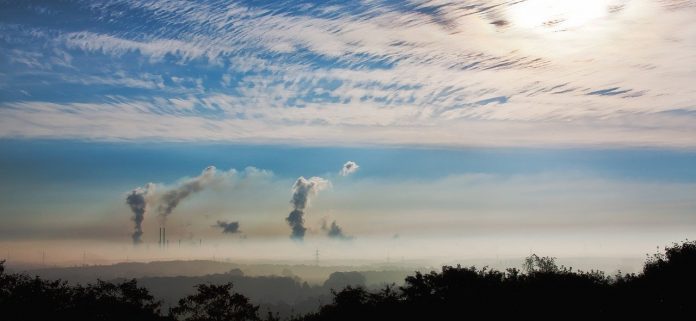New air quality figures for a pollution hotspot in Biddulph show that levels have worsened, despite a reduction in car use during lockdown.
Results from a diffusion tube at the Knypersley crossroads for last year revealed that air quality had deteriorated since 2019 – a result branded “horrendous” by one councillor.
The monitor measures the amount of NO2 (nitrogen dioxide) in the air, a chemical released primarily as a result of the burning of fuel. It is positioned just over two metres from the kerb where Park Lane and Newpool Road meet the A527.
While the figures are not high enough for Knypersley to be included in an official Air Quality Management Area, of which there are two in the Moorlands, it will be seen as a damning result for the district council, which is keen to promote its environmental projects having just published the first part of a climate action plan.
Air Quality Standards regulations 2010 require that the annual mean concentration of NO2 must not exceed 40 micrograms per cubic metre of air. In 2018, 23.5 micrograms of NO2 were recorded per cubic metre at the Knypersley hotspot. That went down to 22.9 in 2019, but increased to 23.1 in 2020. While it is not a huge increase, measurements have mostly decreased since monitoring began in 2015.
Labour Coun Nigel Yates, who represents Biddulph West, was at a meeting of the authority’s Community Overview and Scrutiny Panel where the findings were presented on Monday.
He told the Chronicle: “It’s horrendous to think that we have had a year of minimal car use, but it has not had any impact on the pollution hotspots in Biddulph.”
Coun Yates explained that the diffusion tube had been placed at the crossroads as it was a frequent “stop-start point” for cars heading in the direction of the town’s schools.
He said: “Knypersley crossroads services three schools: Knypersley First School, James Bateman Middle School and Biddulph High School. There is a very high concentration of short-duration traffic congregating there.
“We have got to encourage people to leave their cars at home and walk to school, or park their cars a reasonable distance away.
“To me, the solution is Draconian – putting yellow lines everywhere in areas around the schools.
“There has to be the infrastructure that means parents are confident to allow kids to walk to school. When I was a schoolkid, I would never have dreamed of getting a lift.
“The problem now is that parents can pick a school anywhere. They do not have to attend one in their catchment area, so it has pushed some into picking schools that are perceived to be better and, because they are too far away to walk, it increases pollution.
“It would be interesting to do a survey on Knypersley First School, for example, to see where drivers are actually coming from. Are they driving because they are from outside the area or is it because they don’t want their kids walking to school?”
Alicia Patterson, the district’s head of environmental health, told the meeting that there had been “delays” with the implementation of an action plan to deal with air quality levels as a result of the pandemic.
However, she did explain that the council was working on a number of projects to deal with the figures. One of which was a “transport management system” at a junction in Cellarhead, where levels of NO2 were the worst in the district. It will utilise four real-time air quality sensors to monitor pollution.
Coun Yates suggested that the national 20’s Plenty campaign could be implemented in Knypersley to improve air quality. It advocates lower speed limits by using road signs and road markings, rather than expensive traffic engineering methods such as speed bumps.
He said: “Generally, the slower you go, the less strain on the engine and less fuel you use, and you are producing less particulates.”



